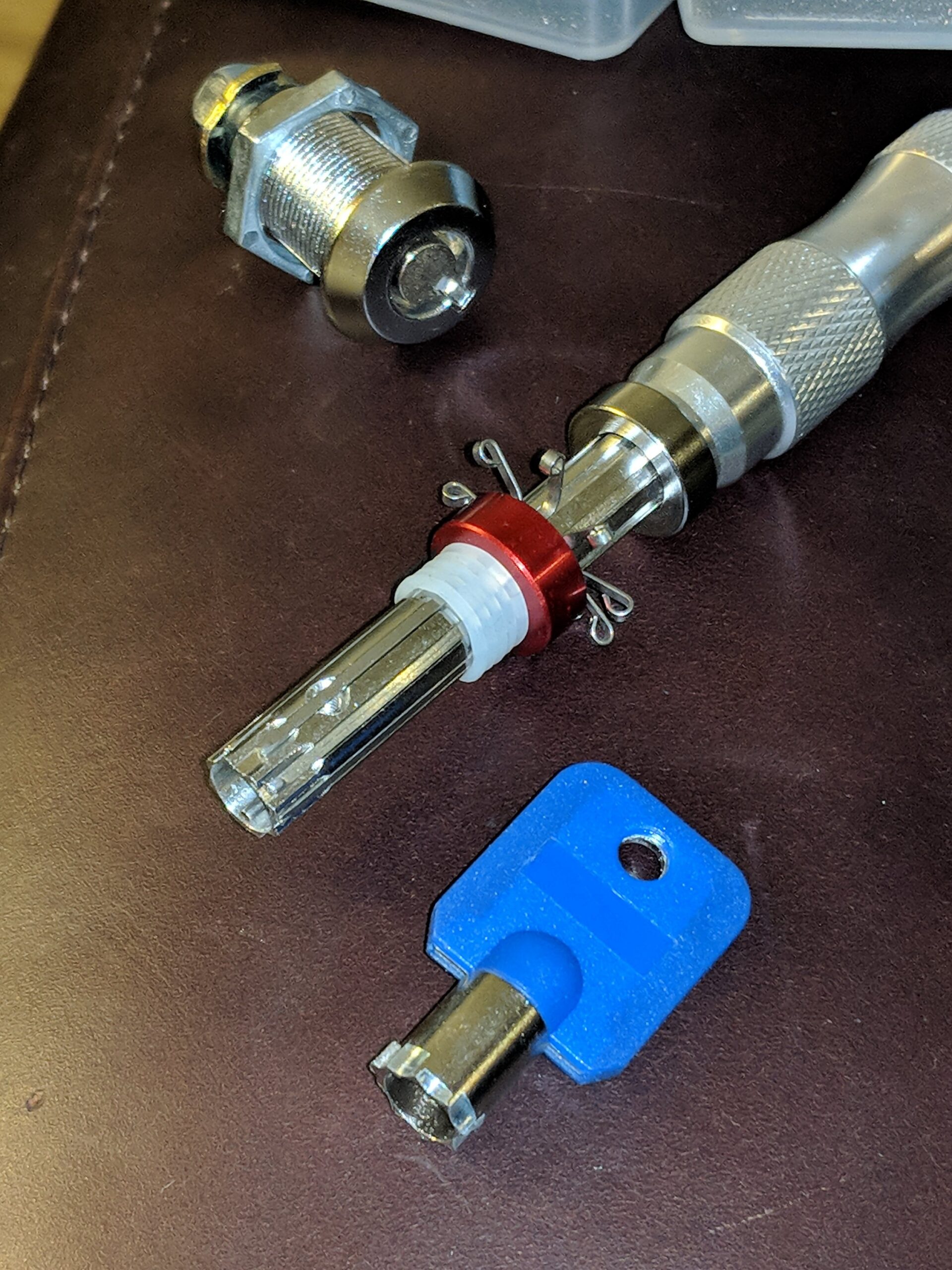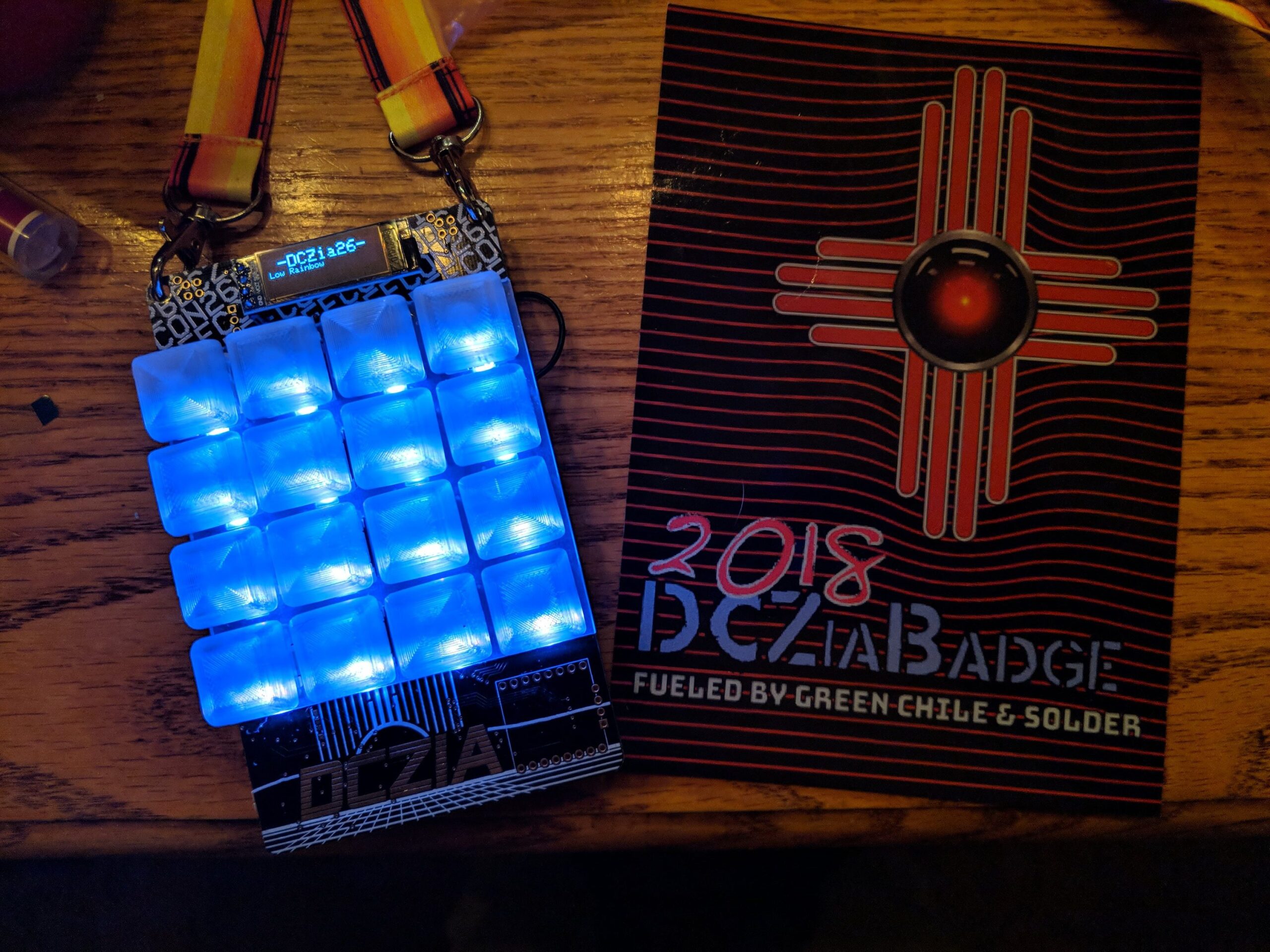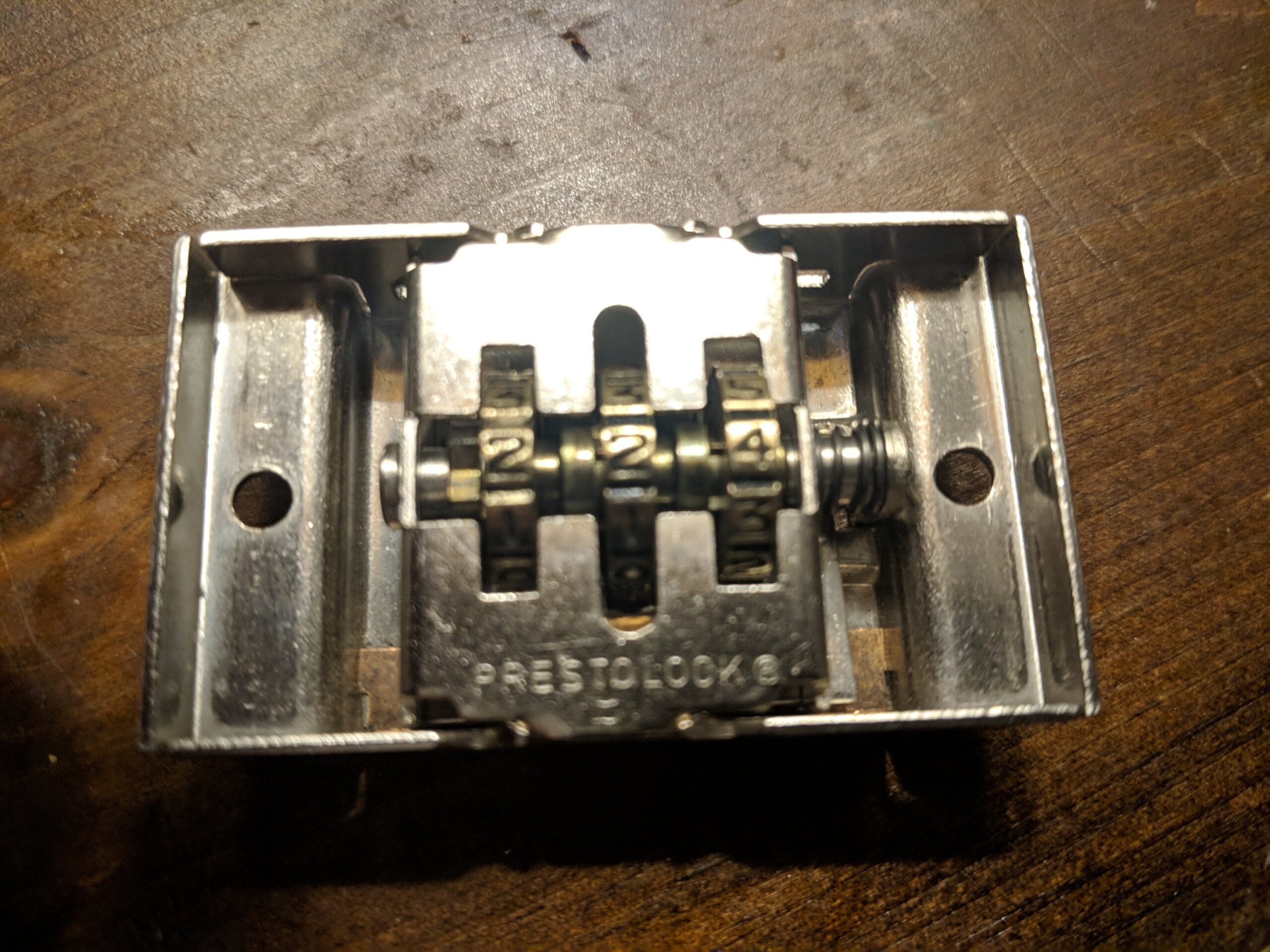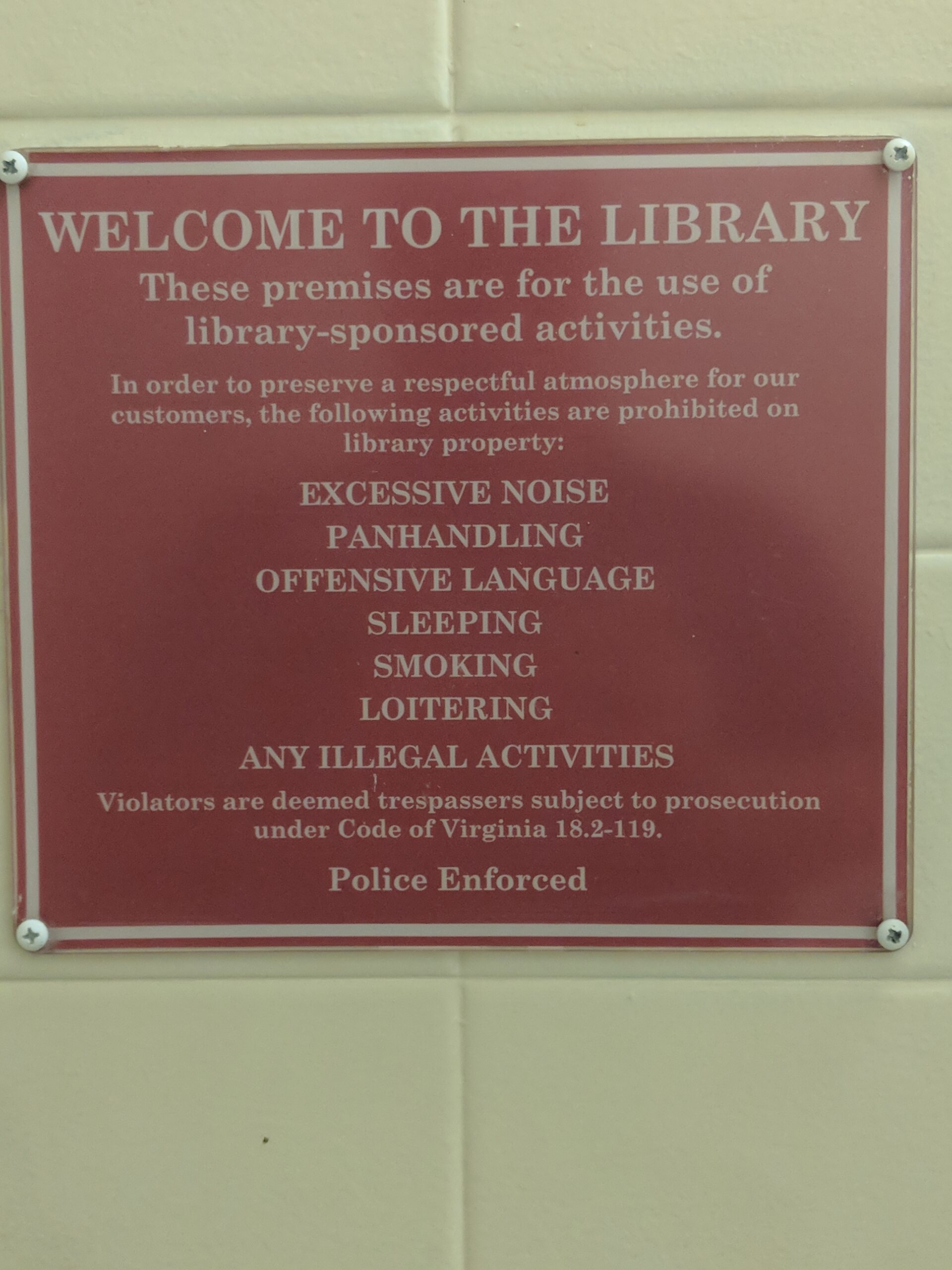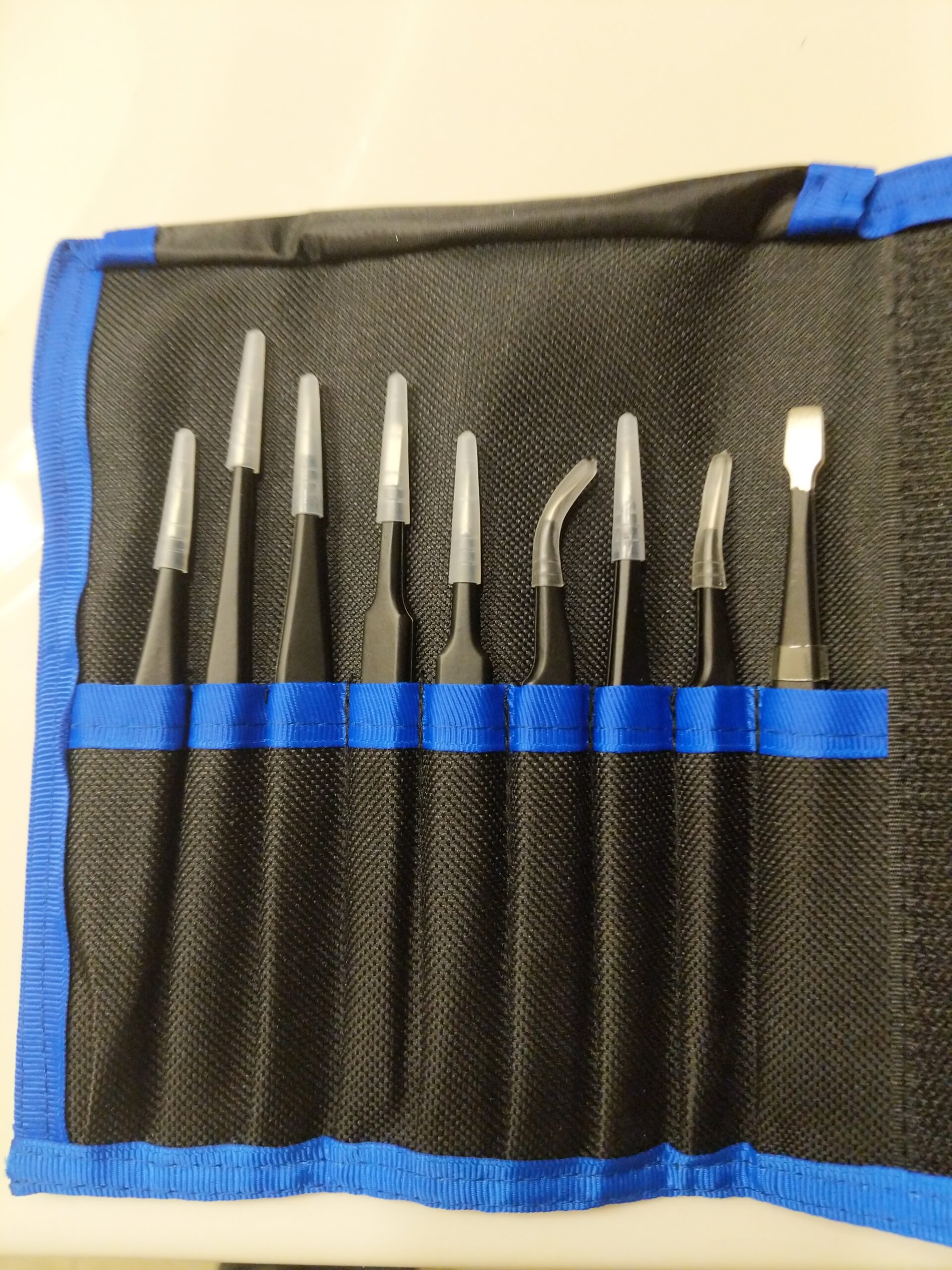One of last month’s meeting attendees, bless his heart, and I will hereafter refer to him as HE WHO SHALL NOT BE NAMED, because I haven’t asked his permission… Gave these lovelies out at the meeting. I finally got around to looking at it, and SAVAGE! Good thing I got new tweezers.
DCZIA badge interactions…
So one of the menu options on the DCZIA badge is a BLE scan. I ran it with all my badges lit up, and it recognized TWO DC26 badges. I suspect that one of those is the TransIonospheric badge, because that one reported seeing the DCZIA badge…
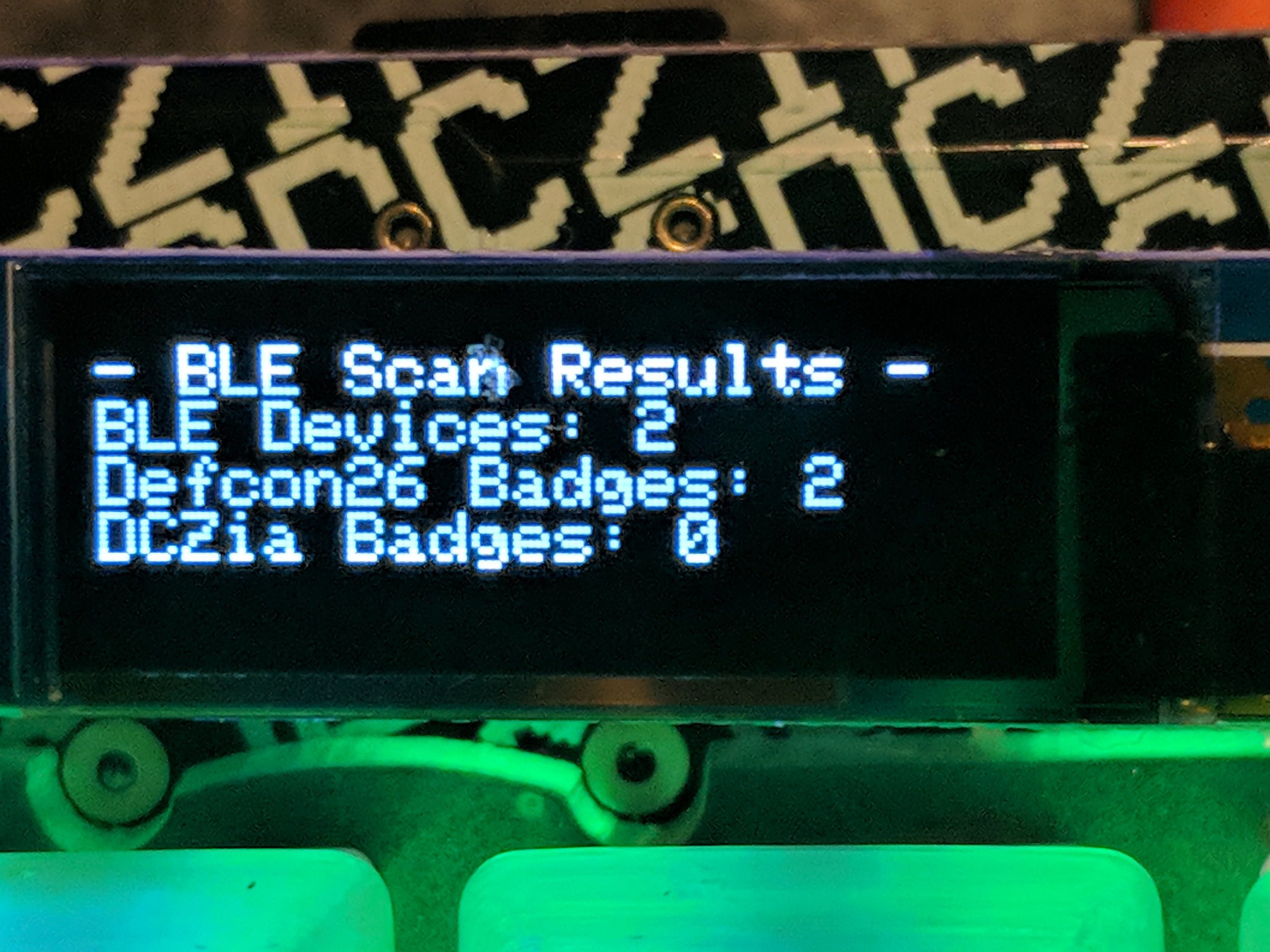
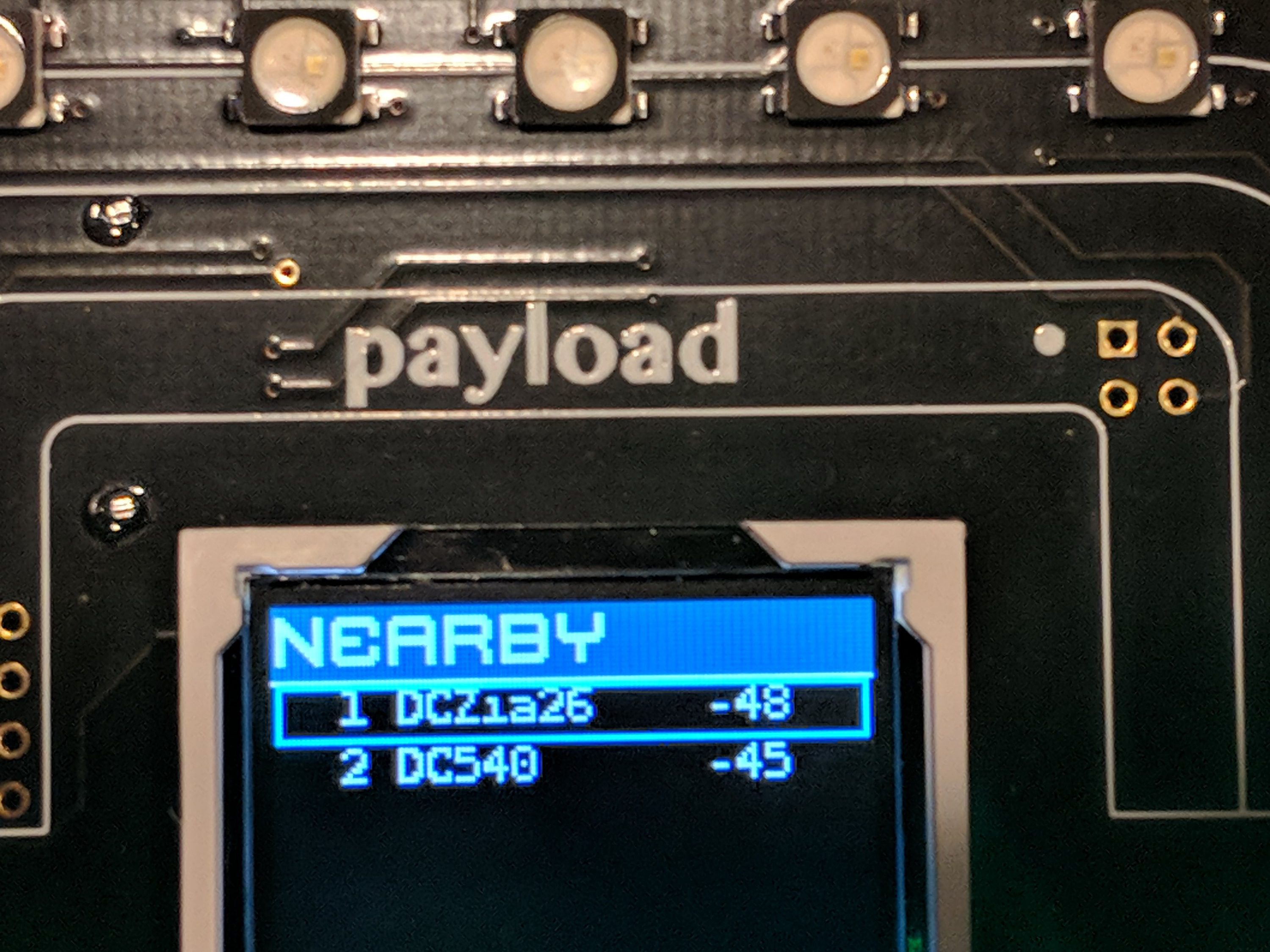
Shenzhen IO
What a badass little game. Found it by accident on Steam. You’re a hardware hacker/coder taking over for someone who left or got fired, and you have to figure out how to design circuits and write machine code to make them meet specs. Fun and challenging, and well-designed. Exactly what I needed right now.
Tubular picking
No, this isn’t about radical bluegrass. I acquired a set of tubular lockpicks some time ago, but never got around to trying them out. After our first meeting, I was inspired, so I ordered a few locks to try them out on.
I had NO IDEA how easy these things make it. It’s amazing that these locks are marketed at all. Flatten the tension bars. Ease the pick in while gently twisting. Eventually the pressure will balance out and the lock will open. Ridonkulous.
My deepest apologies…
In my haste, in my rush, in my frazzled excitement over our first meeting, I 100% COMPLETELY SPACED on bringing the SWAG. Yes, I had swag beyond the silly little stickers. Remind me next month.
Somebody got the DCZIA badge…
Super easy to assemble, seems like we can do a lot of fun things with it too…
A Different Kind of Lock
Picked up a locked Zero Halliburton Centurion Elite briefcase at an auction. There were contents, so I was dead set on getting in. It was the three-dial combo type. Tried brute-forcing it, but no luck. I suspect I would have had to go from closed and latched to open with every iteration, and that wasn’t about to happen. So I seduced my way into the case by another means, and removed the lock mechanism. Hell, this case is considered the Rolex of briefcases, so I’d like to know the combo and be able to use it.
Meeting recap
First meeting, I’d call it a success despite my arriving a few minutes late. I want to thank everyone who showed up, both those I have met before and those I haven’t. Hopefully next time will be in a drinking establishment. Stay tuned!




